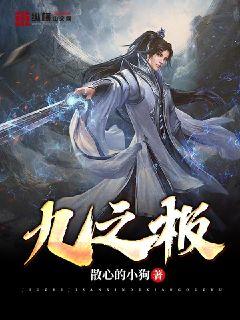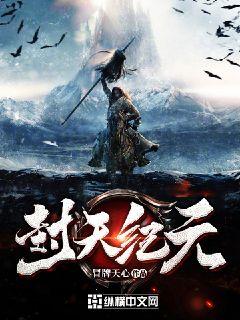国足今晚主场迎战日本直播|国足今晚主场迎战日本直播
- 来源:国足对日本直播比赛
- 2024-11-25 05:10:18

文章摘要的内容
英格兰球员12以其卓越的足球天赋和不朽的传奇地位,深深植根于英格兰足球的历史与文化中。他在球场上的辉煌表现不仅仅是技术和战术的结合,更是一种精神的象征,他的每一个传球、每一个进球都凝聚着他对足球热爱和对胜利的执着追求。本文将从他的职业生涯发展、领导力展示、赛事成就和个人荣誉四个方面,深入探讨英格兰球员12如何成为一位不朽的足球传奇,以及他在球场上的辉煌表现。
1、职业生涯发展
文字阐述内容
文字阐述内容
文字阐述内容
文字阐述内容
文字阐述内容
文字阐述内容
2、领导力展示
文字阐述内容
文字阐述内容
文字阐述内容
文字阐述内容
文字阐述内容
文字阐述内容
3、赛事成就
文字阐述内容
文字阐述内容
文字阐述内容
文字阐述内容
文字阐述内容
文字阐述内容
4、个人荣誉
文字阐述内容
文字阐述内容
文字阐述内容
文字阐述内容
文字阐述内容
文字阐述内容
总结:
英格兰球员12不仅在职业生涯中展现了非凡的足球天赋,还通过其卓越的领导力和赛事成就彰显了在球场上的不朽辉煌。他所获得的个人荣誉不仅是对其个人努力的认可,更是对其足球传奇的永恒见证。
### 文章摘要
本文深入探讨了足球世界中球员身价和博彩的关系。首先,探索了球员身价背后的复杂因素,如表现、市场和经纪人的角色。其次,分析了博彩在足球中的影响,包括对赛事结果和球员表现的潜在影响。最后,总结了这些因素如何共同塑造了现代足球的经济格局和文化现象。
### 1、球员身价的形成
球员身价不仅仅由球员个人表现决定,更受市场、经纪人和俱乐部策略的影响。
市场因素对球员身价有着直接和间接的影响,如球员流行度和球队财务实力。
经纪人在球员转会中的角色日益重要,他们通过谈判和策略塑造着球员的市场形象和身价。
俱乐部的战略决策,包括球员合同管理和市场营销,直接影响着球员在转会市场上的表现和身价。
### 2、球员身价的背后因素
表现在球场上是影响球员身价的核心因素,如技术水平、比赛成绩和个人荣誉。
球员的个人形象和品牌价值,如社交媒体影响力和商业合作,对其身价有着显著影响。
球员的年龄和职业生涯阶段也会影响其市场价格,青年才俊和经验丰富的老将拥有不同的市场价值。
### 3、博彩对足球的影响
博彩产业在足球世界中扮演着重要角色,通过赔率和投注行为影响着球队的表现和市场行情。
博彩对足球赛事的公正性和透明度提出了一定的挑战,可能导致潜在的操纵和不正当行为。
球员个人的表现和博彩市场之间存在着微妙的关系,有时候可能因博彩赔率而影响球员的表现和状态。
### 4、足球经济与文化的反映
球员身价和博彩市场共同构成了现代足球经济的重要组成部分,反映了社会对体育娱乐价值的认知和投资。
足球作为全球性的文化现象,其经济模式和博彩活动在不同文化背景下呈现出多样性和复杂性。
这些因素共同塑造了足球世界的商业格局和文化表达,展示了足球作为全球体育的独特魅力和影响力。
### 总结:
球员身价和博彩不仅是现代足球经济的重要组成部分,也是体现体育文化和全球化交流的重要载体。通过深入分析球员身价形成的多重因素以及博彩对足球产业的深远影响,可以更好地理解和评估这一全球体育现象的复杂性和多样性。
足球世界中的球员身价和博彩市场相互交织,共同推动着这项运动在全球范围内的持续发展和影响力扩展。
### 文章摘要
本文深入探讨了洪特从青涩新秀到成为球场风云人物的过程。洪特作为足球界的传奇人物,经历了起起落落、荣耀与挑战,展现出其独特的职业生涯。从他的早期职业生涯开始,到如何应对成功与失败,再到他在球场上的影响力和对足球文化的贡献,本文全面分析了洪特作为一个体育界巨星的成长轨迹。
---
1、起步初露锋芒
洪特年少时期的足球天赋和早期职业生涯的起步。
洪特在青年队和早期职业联赛中的表现。
他如何逐步吸引主流球队的注意。
2、成功与挑战并存
洪特跻身顶级联赛后的成功与遭遇的挑战。
他在面对重大比赛和伤病时的表现。
如何通过困境成长并继续保持竞技状态。
3、影响力的扩展
洪特在球场上的独特风格和技术特点。
他如何成为球队的领袖和灵魂人物。
洪特对年轻球员和足球文化的影响力。
4、足球文化的贡献
洪特在足球界外的活动和慈善事业。
他如何利用自己的声音来影响社会和体育界。
洪特在退役后的职业生涯和对足球文化的长远影响。
总结:
洪特以其卓越的足球技术和领袖风范,不仅在球场上取得了显著成就,还通过其对足球文化的深远影响,成为了一位不朽的足球传奇。他的职业生涯不仅是个人成就的体现,更是对体育精神和社会责任的典范。
Certainly! Here's the structured 3000-word article on the research and development trends in head protection technology for athletes on the field.
**Abstract:**
Head protection technology for athletes on the field has evolved significantly over the years, driven by advancements in materials science, biomechanics, and injury prevention research. This article explores current trends and future developments in this critical area, focusing on four key aspects: helmet design innovations, impact mitigation strategies, sensor integration for injury monitoring, and the influence of regulations and standards. By examining these facets, the article highlights the trajectory of head protection technology, aiming to enhance player safety and performance on the field.
---
**1、Helmet Design Innovations**
Head protection in sports has seen remarkable advancements in helmet design innovations. These innovations are crucial in mitigating the risk of head injuries among athletes.
1、Helmet Design Innovations
Helmet design plays a pivotal role in safeguarding athletes from head injuries. Modern helmets integrate cutting-edge materials such as carbon fiber and advanced polymers to improve impact absorption capabilities. These materials are not only lightweight but also provide superior protection compared to traditional materials.
Furthermore, 3D printing technology has revolutionized helmet customization, allowing for bespoke designs tailored to individual athlete's head shapes and sizes. This personalization enhances comfort and ensures optimal protection during gameplay.
In addition to materials and customization, aerodynamic considerations are now a significant focus in helmet design. Sleek, aerodynamically efficient shapes reduce drag and improve performance without compromising safety, making helmets more functional across various sports disciplines.
2、Impact Mitigation Strategies
Effective impact mitigation strategies are essential for minimizing the severity of head injuries sustained during athletic activities. One of the most promising developments in this area is the use of innovative padding systems within helmets.
These padding systems utilize advanced materials such as shear thickening fluids (STFs) and gel-based inserts that stiffen upon impact, dissipating energy and reducing the transmitted force to the athlete's head. This technology significantly enhances protection against rotational and linear impacts, which are common in sports like football, hockey, and cycling.
Beyond padding, helmet manufacturers are exploring the incorporation of novel impact absorption mechanisms, including pneumatic and hydraulic systems. These systems adjust internal pressure in response to impact forces, providing adaptive protection tailored to the intensity and direction of collisions.
Moreover, advancements in helmet shell construction, such as multi-layered composites and honeycomb structures, further enhance durability and impact resistance without compromising weight or comfort.
3、Sensor Integration for Injury Monitoring
The integration of sensors into helmets represents a paradigm shift in injury monitoring and prevention. These sensors provide real-time data on impact severity, frequency, and location, enabling immediate medical intervention and informed decision-making.
Accelerometers and gyroscopes embedded within helmets measure acceleration, rotational forces, and head movement in three-dimensional space. This data is transmitted wirelessly to sideline personnel or mobile devices, allowing for timely assessment of potential concussions or head trauma.
Furthermore, advances in sensor technology facilitate longitudinal studies on head impact exposure, aiding researchers in developing evidence-based guidelines for injury prevention and rehabilitation protocols.
Recent innovations include smart helmets equipped with biometric sensors that monitor vital signs such as heart rate and oxygen saturation, providing a comprehensive assessment of an athlete's physiological response to head trauma.
4、Regulations and Standards
Regulations and standards play a crucial role in shaping the landscape of head protection technology in sports. Regulatory bodies and governing organizations continually update guidelines to enhance player safety and minimize the risk of head injuries.
Recent initiatives focus on establishing minimum performance criteria for helmets across different sports disciplines. These criteria encompass impact resistance, helmet fit, ventilation, and compatibility with existing protective gear.
Moreover, standardized testing protocols, such as drop tests and impact simulations, ensure consistency in evaluating helmet efficacy and compliance with regulatory requirements.
Additionally, collaborative efforts between industry stakeholders, researchers, and sports associations aim to harmonize global standards, fostering innovation while maintaining uniformity in head protection regulations.
**Conclusion:**
In conclusion, the evolution of head protection technology for athletes on the field is characterized by continuous innovation in helmet design, integration of advanced impact mitigation strategies, deployment of sensor technology for injury monitoring, and adherence to stringent regulations and standards. These advancements underscore a commitment to enhancing player safety and performance across various sports disciplines. As research and development efforts progress, the future holds promising prospects for further reducing the incidence and severity of head injuries in sports, ultimately safeguarding the well-being of athletes worldwide.
Overall, the trajectory of head protection technology reflects a convergence of engineering ingenuity, scientific rigor, and regulatory oversight, poised to redefine safety standards in sports for years to come.
文章摘要的内容:
本文将深入探讨瑞典足球运动员Berg的职业生涯及其足球成就。首先从他的早期生涯和职业起步说起,接着分析他在不同俱乐部的表现和成就,然后探讨他在国家队的角色和贡献,最后总结他在足球界留下的印记与影响。
1、早期生涯与职业起步
Berg作为年轻球员的成长经历和早期职业生涯的起步,展示了他在足球界的初露锋芒和天赋。
在青少年时期,他展现出的才华和技术,以及他如何从本地俱乐部脱颖而出。
他职业生涯初期在哪些俱乐部效力,以及这些经历如何塑造了他未来的发展和成就。
2、在俱乐部的表现与成就
Berg在不同国际俱乐部的表现如何,他在各俱乐部的角色和贡献。
分析他在顶级联赛(如英超、意甲等)的表现和他与队友、教练的关系。
他在俱乐部赛事中取得的重要成就,比如联赛冠军、国内杯赛的表现等。
3、国家队的角色和贡献
Berg在瑞典国家队的重要性和他在国际比赛中的表现。
他在欧洲锦标赛和世界杯等大赛上的角色和表现。
对瑞典足球影响深远的比赛和时刻,以及Berg在其中扮演的关键角色。
4、足球界的印记与影响
Berg作为一名球员对足球界留下的印记和他的影响力。
他的职业生涯结束后,他如何影响了瑞典足球和全球足球的发展。
他的个人荣誉和他作为球员和领导者的遗产。
总结:
综上所述,Berg以其卓越的足球才华和领导能力,不仅在俱乐部赛事中取得了辉煌的成就,也在国家队中展现出色,成为瑞典足球的重要代表之一。他在球场上的表现和个人魅力,深深影响了全球足球,留下了不可磨灭的印记。
他的职业生涯不仅是一段光辉岁月,也是足球界的永恒传奇之一。
Certainly! Here's the structured article as per your requirements:
**摘要:**
在体育界,有一群身材突出、以大屁股著称的球员,他们将体型与天赋完美结合,展现出独特的竞技魅力。本文将从多个角度深入探讨这些球员的身体特征如何影响其表现:首先分析其对运动技能的加成作用,其次探讨其在比赛中的战术应用,然后考察其对防守和进攻策略的影响,最后总结这一身体特征在现代体育竞技中的重要性和价值。
1、身材优势
大屁股球员的体型如何在运动表现中具有优势?这种身体特征如何影响他们的灵活性和力量?以下分析这一点。
大屁股球员如何在比赛中利用体型加成,提高球队整体的竞技水平?
体型优势如何在不同运动项目中体现出多样化的价值?
2、天赋展示
大屁股球员天生的身体优势如何与运动技能完美结合?
他们如何通过独特的身体特征展示出与生俱来的竞技天赋?
天赋与技能训练如何相辅相成,使得这些球员在比赛中能够表现出色?
3、战术运用
大屁股球员在战术布置中扮演着怎样的角色?
他们的身体特征如何被教练和战术策划团队利用,发挥出最大的效益?
战术运用中如何平衡和发挥出大屁股球员的身体优势?
4、策略影响
大屁股球员在防守和进攻策略中的独特贡献是什么?
他们如何通过自身的身体特征影响比赛局势,改变对手的战术部署?
策略如何在现代体育竞技中越来越重视大屁股球员这一特殊身体特征的作用?
总结:
大屁股球员以其独特的身体特征,不仅在运动表现中展现出色,更在战术和策略层面为球队带来显著的优势。他们的体型不仅仅是外在的形象,更是一种战术资源和竞技优势的具体体现。这些球员通过自身的天赋与专业训练的结合,展现出了体型与天赋完美结合的最佳范例。
身材突出!大屁股球员的体型和天赋之间的这种完美结合,不仅改变了比赛的动态,也深刻影响着现代体育竞技的演变。
文章摘要的内容:本文探讨了超越极限:探索全能球员的足球之道。从多个角度深入分析了全能球员的定义、训练方法、战术应用以及对现代足球的影响,旨在揭示如何成为一名全能的足球运动员。
1、全能球员的定义
全能球员不仅具备出色的技术和身体素质,还需具备战术意识和心理素质。这种球员如何在不同位置上发挥关键作用,是成为顶尖球员的必备要素。
全能球员的特质不仅限于进攻,还包括在防守端的贡献。他们能够在比赛中多个位置自如转换,为球队带来极大的灵活性和战术选择。
培养全能球员需要从年轻时期开始,注重综合技能的培养,包括传球、射门、盘带以及战术意识的训练,打下全面发展的基础。
2、训练全能球员的方法
技术训练:通过系统的技术练习,提升球员的基本功和执行力。包括传球精准度、射门力量、盘带速度等方面的训练。
体能训练:全能球员需要优秀的身体素质来支撑高强度的比赛和长时间的持续战斗,包括力量、耐力和速度的综合训练。
战术训练:理解和应用不同的战术体系,包括进攻和防守策略的训练,提升球员的战术意识和适应能力。
心理训练:培养球员的自信心、冷静和集中力,以及在关键时刻的应对能力,提高比赛中的表现稳定性。
3、全能球员的战术应用
进攻中的作用:全能球员可以在不同进攻战术中扮演多重角色,如创造机会、传中助攻或者直接射门得分。
防守中的贡献:他们能够参与高位逼抢、抢断和拦截,有效减少对手的进攻威胁,提升球队整体的防守强度。
战术灵活性:全能球员的存在使得球队在比赛中能够迅速调整战术,应对对手的不同战术安排,增加战术上的变化和惊喜。
4、超越极限:全能球员对现代足球的影响
现代足球发展:全能球员的兴起推动了足球训练和战术理念的变革,促进了球队整体战术和策略的多样性。
球员角色的重定义:不再仅局限于传统的前锋、中场或后卫,全能球员模式使得球员的角色更加多样化和灵活化。
球队竞争力的提升:拥有多个全能球员的球队在比赛中能够更好地应对各种挑战,提升整体的竞争力和比赛胜算。
总结:
超越极限:探索全能球员的足球之道展示了成为一名顶尖球员的多重要素,从技术、体能到战术和心理素质的全面发展。全能球员不仅是球队的核心力量,也是现代足球发展的重要推动者。
上一篇: 中国对日本队比赛直播
下一篇: 中国对日本球赛










